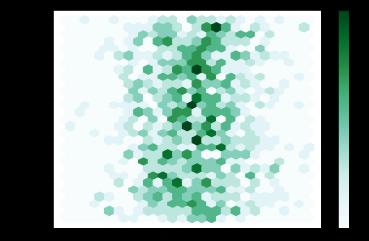以下默认所有的操作都先导入了numpy、pandas、matplotlib、seaborn
import numpy as np
import pandas as pd
import matplotlib.pyplot as plt
import seaborn as sns
一、折线图
折线图可以用来表示数据随着时间变化的趋势
x = [2010, 2011, 2012, 2013, 2014, 2015, 2016, 2017, 2018, 2019]
y = [5, 3, 6, 20, 17, 16, 19, 30, 32, 35]
- Matplotlib
plt.plot(x, y)
plt.show()
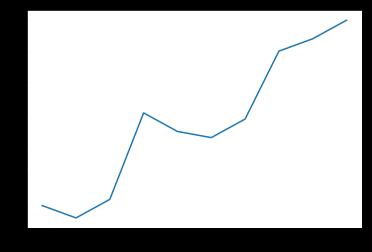
- Seaborn
df = pd.DataFrame({\'x\': x, \'y\': y})
sns.lineplot(x="x", y="y", data=df)
plt.show()
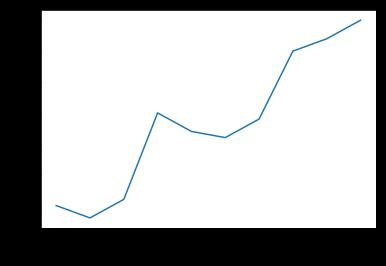
二、直方图
直方图是比较常见的视图,它是把横坐标等分成了一定数量的小区间,然后在每个小区间内用矩形条(bars)展示该区间的数值
a = np.random.randn(100)
s = pd.Series(a)
- Matplotlib
plt.hist(s)
plt.show()
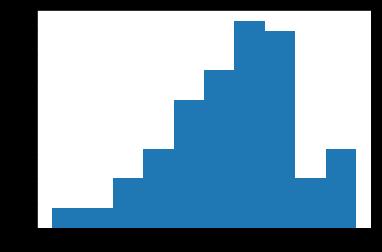
- Seaborn
sns.distplot(s, kde=False)
plt.show()
sns.distplot(s, kde=True)
plt.show()
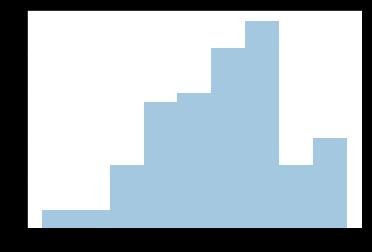
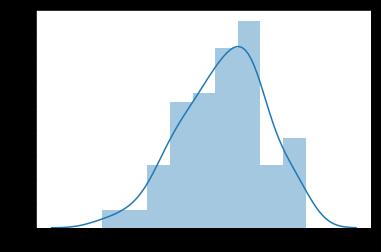
三、垂直条形图
条形图可以帮我们查看类别的特征。在条形图中,长条形的长度表示类别的频数,宽度表示类别。
x = [\'Cat1\', \'Cat2\', \'Cat3\', \'Cat4\', \'Cat5\']
y = [5, 4, 8, 12, 7]
- Matplotlib
plt.bar(x, y)
plt.show()
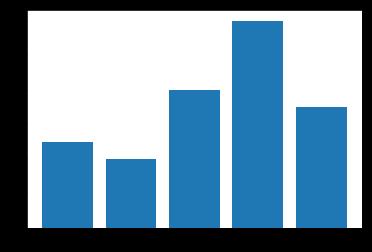
- Seaborn
plt.show()

四、水平条形图
x = [\'Cat1\', \'Cat2\', \'Cat3\', \'Cat4\', \'Cat5\']
y = [5, 4, 8, 12, 7]
plt.barh(x, y)
plt.show()
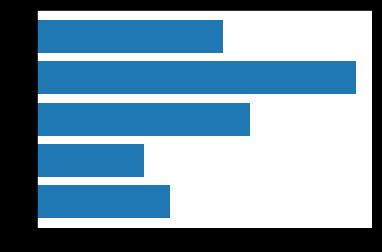
五、饼图
nums = [25, 37, 33, 37, 6]
labels = [\'High-school\',\'Bachelor\',\'Master\',\'Ph.d\', \'Others\']
plt.pie(x = nums, labels=labels)
plt.show()
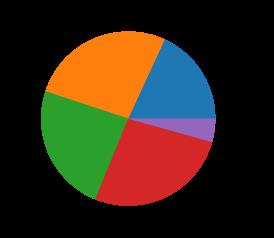
六、箱线图
箱线图由五个数值点组成:最大值 (max)、最小值 (min)、中位数 (median) 和上下四分位数 (Q3, Q1)。
可以帮我们分析出数据的差异性、离散程度和异常值等。
- Matplotlib
# 生成0-1之间的10*4维度数据
data=np.random.normal(size=(10,4))
lables = [\'A\',\'B\',\'C\',\'D\']
# 用Matplotlib画箱线图
plt.boxplot(data,labels=lables)
plt.show()

- Seaborn
# 用Seaborn画箱线图
df = pd.DataFrame(data, columns=lables)
sns.boxplot(data=df)
plt.show()
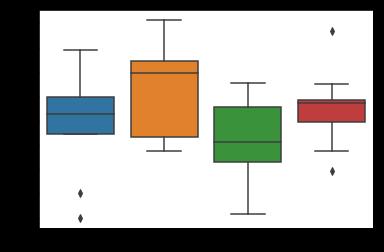
七、热力图
力图,英文叫 heat map,是一种矩阵表示方法,其中矩阵中的元素值用颜色来代表,不同的颜色代表不同大小的值。通过颜色就能直观地知道某个位置上数值的大小。
flights = sns.load_dataset("flights")
data=flights.pivot(\'year\',\'month\',\'passengers\')
sns.heatmap(data)
plt.show()
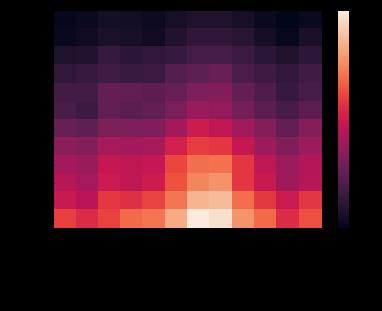
通过 seaborn 的 heatmap 函数,我们可以观察到不同年份,不同月份的乘客数量变化情况,其中颜色越浅的代表乘客数量越多
八、散点图
散点图的英文叫做 scatter plot,它将两个变量的值显示在二维坐标中,非常适合展示两个变量之间的关系。
N = 1000
x = np.random.randn(N)
y = np.random.randn(N)
- Matplotlib
plt.scatter(x, y,marker=\'x\')
plt.show()
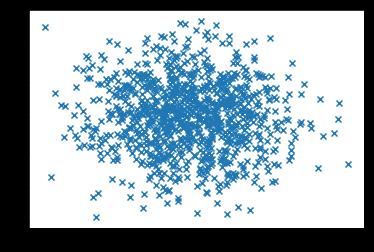
- Seaborn
df = pd.DataFrame({\'x\': x, \'y\': y})
sns.jointplot(x="x", y="y", data=df, kind=\'scatter\');
plt.show()
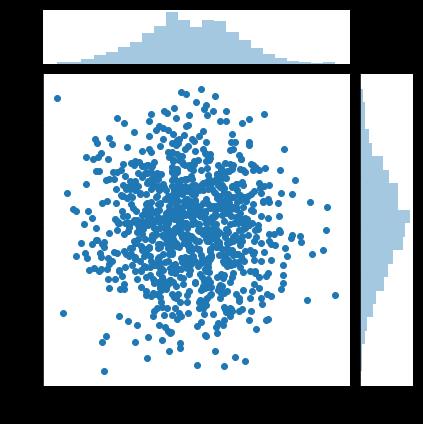
九、蜘蛛图
蜘蛛图是一种显示一对多关系的方法,使一个变量相对于另一个变量的显著性是清晰可见
labels=np.array([u"推进","KDA",u"生存",u"团战",u"发育",u"输出"])
stats=[83, 61, 95, 67, 76, 88]
# 画图数据准备,角度、状态值
angles=np.linspace(0, 2*np.pi, len(labels), endpoint=False)
stats=np.concatenate((stats,[stats[0]]))
angles=np.concatenate((angles,[angles[0]]))
# 用Matplotlib画蜘蛛图
fig = plt.figure()
ax = fig.add_subplot(111, polar=True)
ax.plot(angles, stats, \'o-\', linewidth=2)
ax.fill(angles, stats, alpha=0.25)
# 设置中文字体
font = FontProperties(fname=r"/System/Library/Fonts/PingFang.ttc", size=14)
ax.set_thetagrids(angles * 180/np.pi, labels, FontProperties=font)
plt.show()

十、二元变量分布
二元变量分布可以看两个变量之间的关系
tips = sns.load_dataset("tips")
tips.head(10)
#散点图
sns.jointplot(x="total_bill", y="tip", data=tips, kind=\'scatter\')
#核密度图
sns.jointplot(x="total_bill", y="tip", data=tips, kind=\'kde\')
#Hexbin图
sns.jointplot(x="total_bill", y="tip", data=tips, kind=\'hex\')
plt.show()
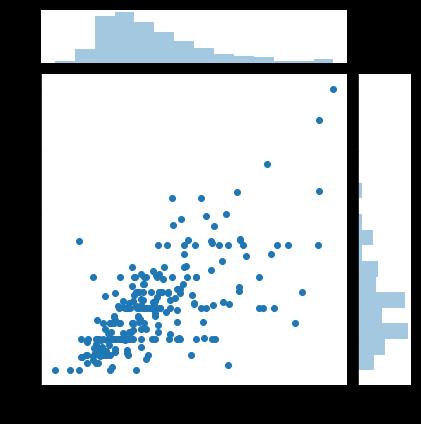
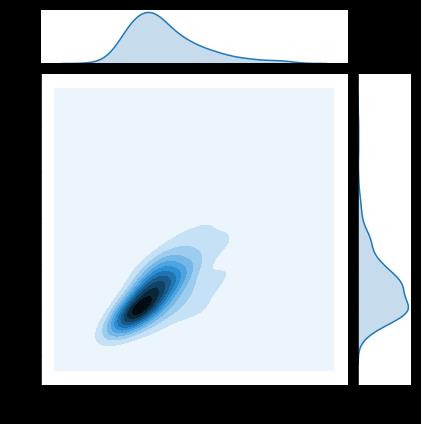
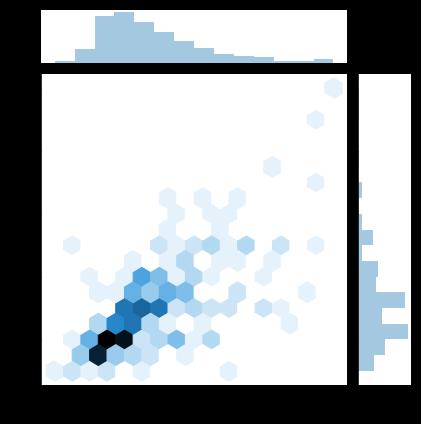
十一、面积图
面积图又称区域图,强调数量随时间而变化的程度,也可用于引起人们对总值趋势的注意。
堆积面积图还可以显示部分与整体的关系。折线图和面积图都可以用来帮助我们对趋势进行分析,当数据集有合计关系或者你想要展示局部与整体关系的时候,使用面积图为更好的选择。
df = pd.DataFrame(
np.random.rand(10, 4),
columns=[\'a\', \'b\', \'c\', \'d\'])
# 堆面积图
df.plot.area()
# 面积图
df.plot.area(stacked=False)


十二、六边形图
六边形图将空间中的点聚合成六边形,然后根据六边形内部的值为这些六边形上色。
df = pd.DataFrame(
np.random.randn(1000, 2),
columns=[\'a\', \'b\'])
df[\'b\'] = df[\'b\'] + np.arange(1000)
# 关键字参数gridsize;它控制x方向上的六边形数量,默认为100,较大的gridsize意味着更多,更小的bin
df.plot.hexbin(x=\'a\', y=\'b\', gridsize=25)
